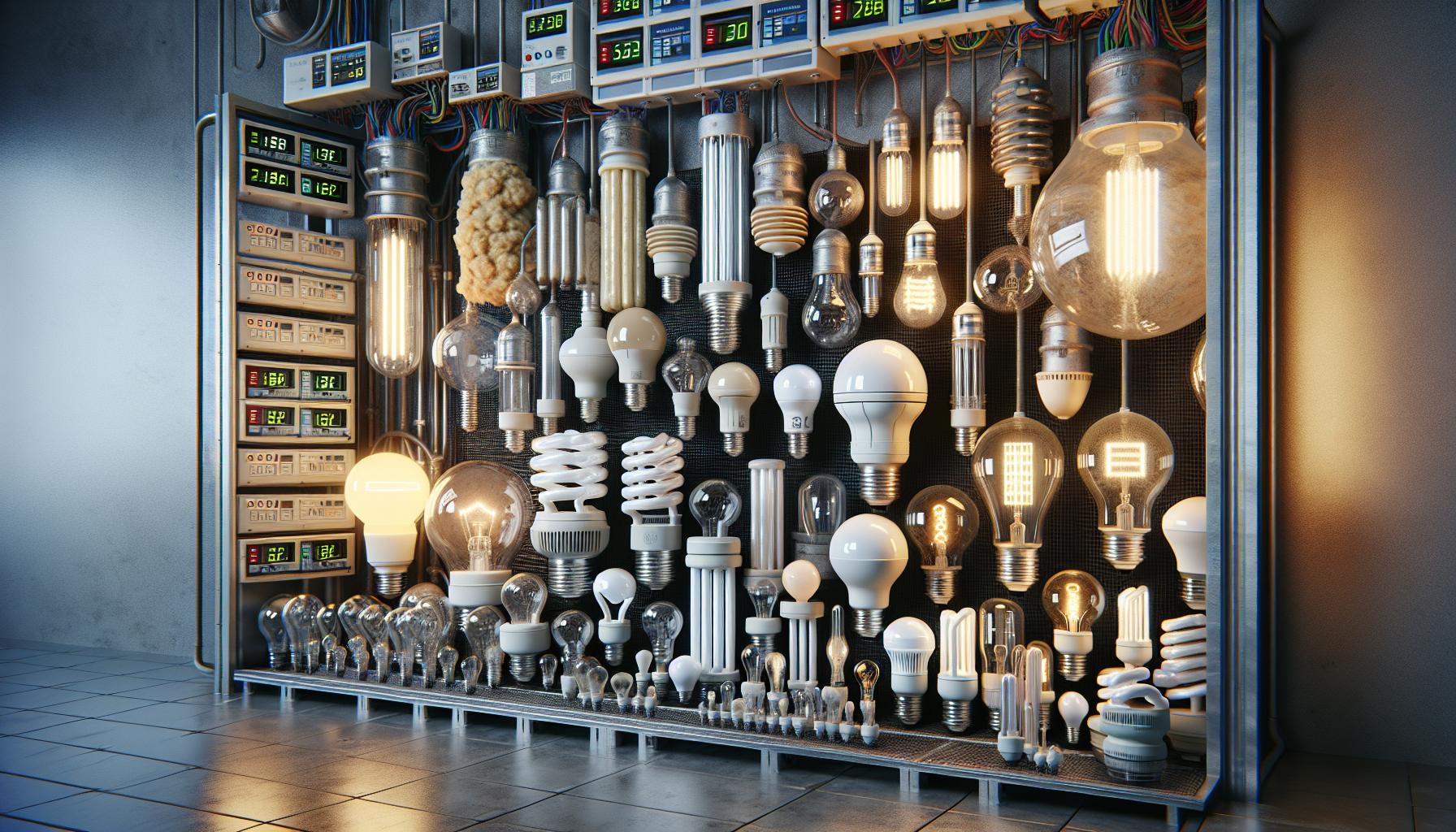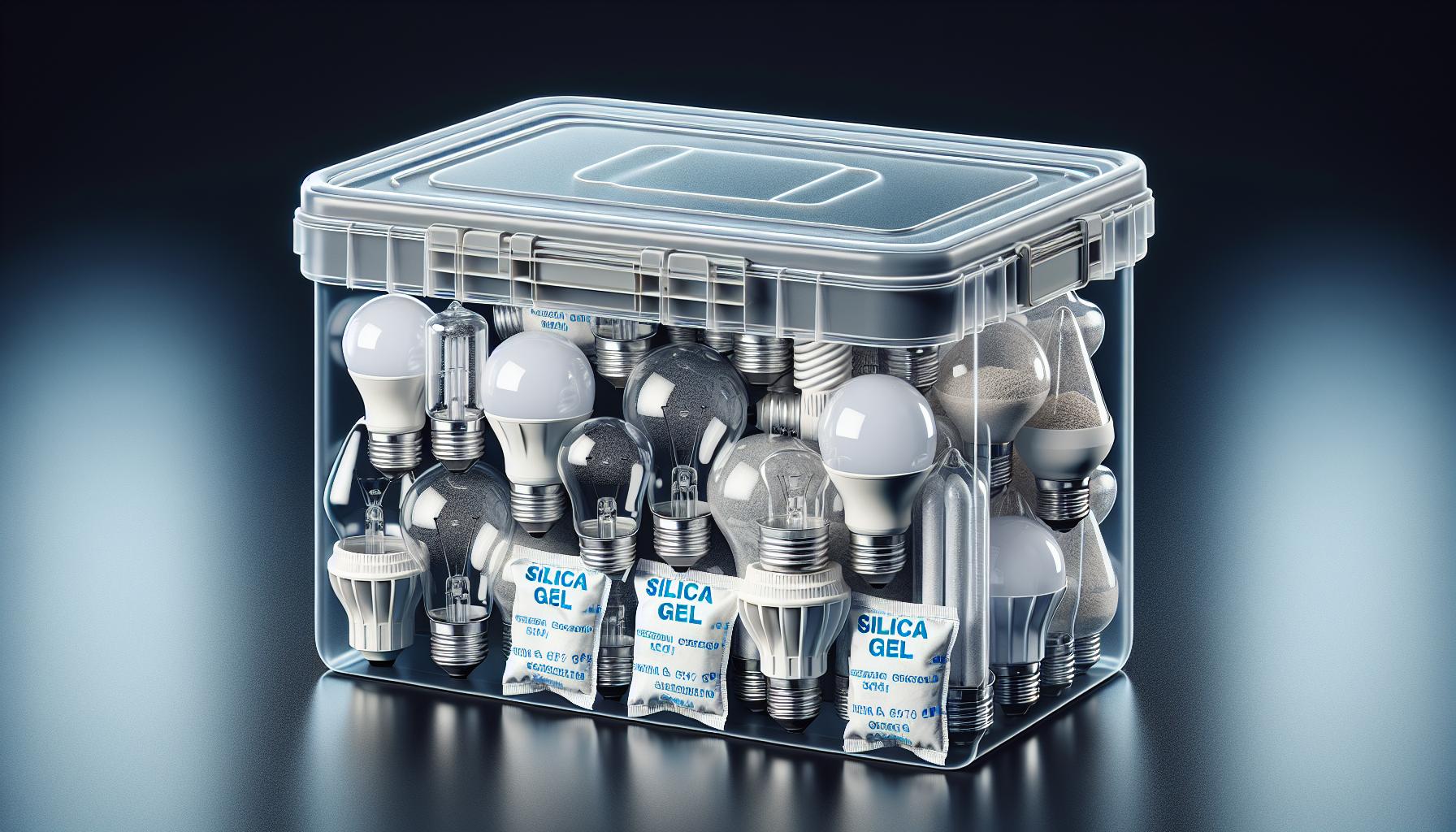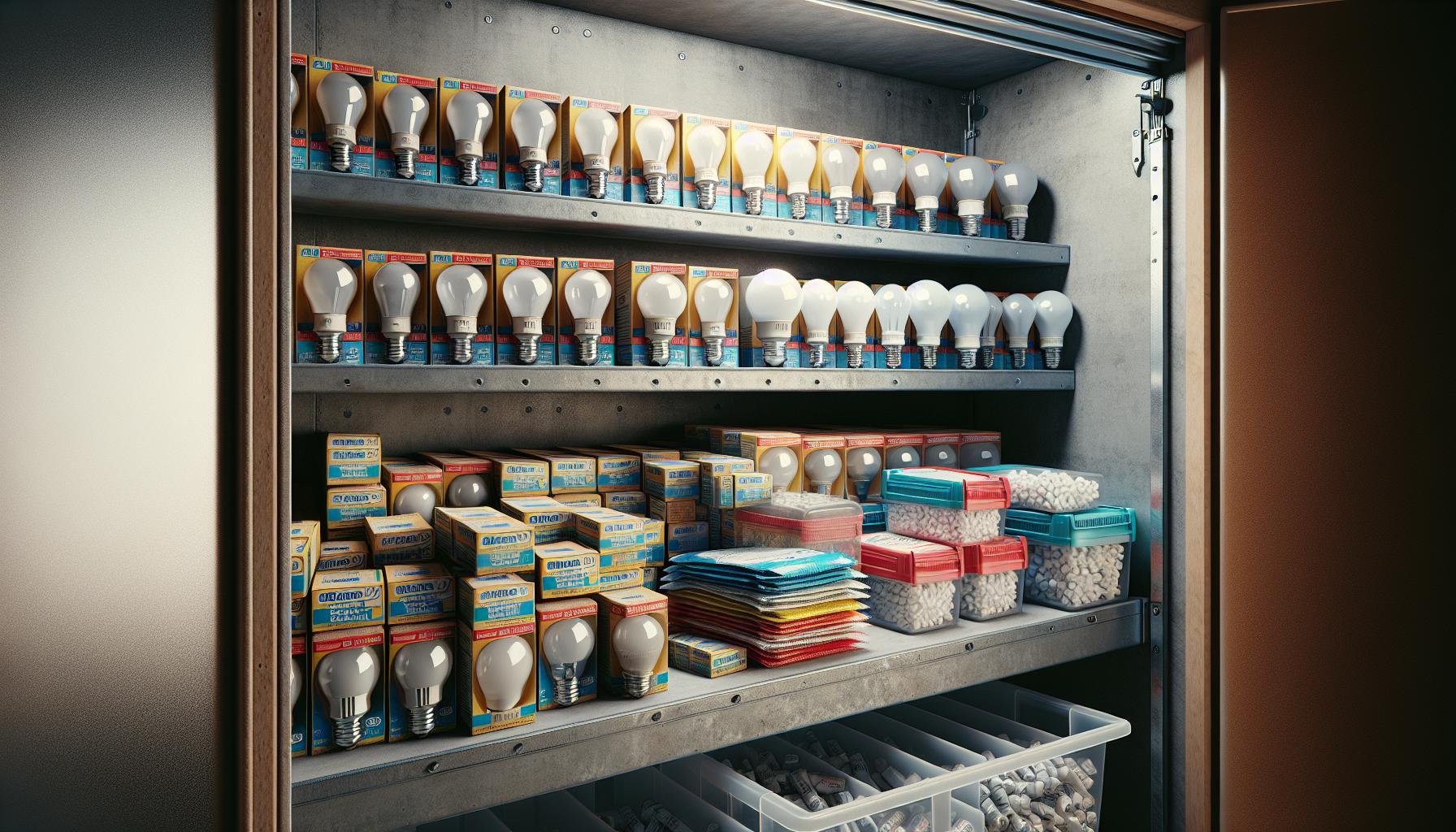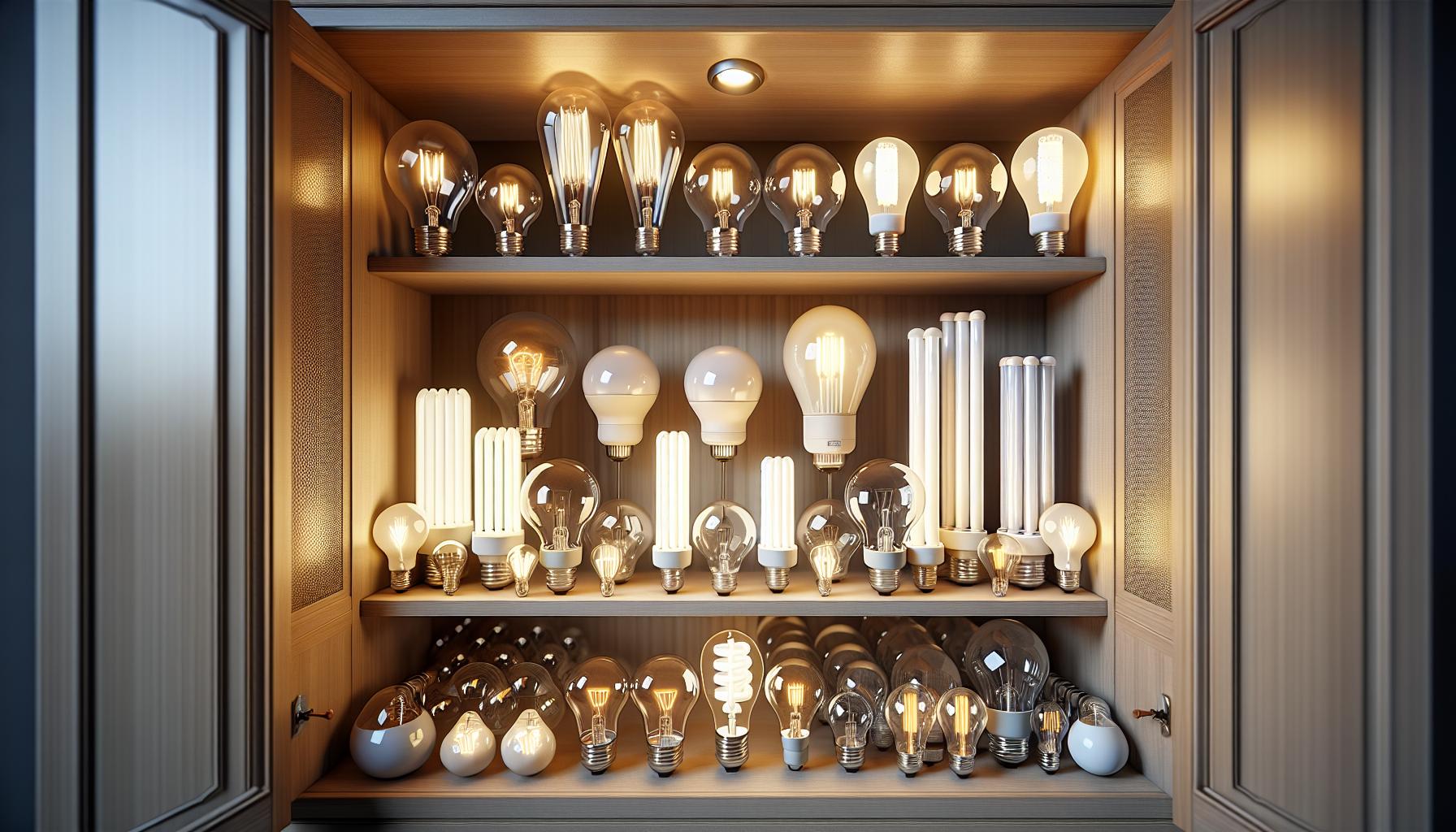Ever found yourself with a surplus of light bulbs and no clue where to stash them? You’re not alone. The garage seems like an obvious storage spot, but is it really the best place for your bulbs? Let’s shed some light on the dos and don’ts of bulb storage.
Temperature swings and humidity are the garage’s trademarks, but how do they affect your light bulbs? Before you toss that box of LEDs or incandescents next to the lawn mower, consider the factors that could shorten their lifespan.
Storing light bulbs properly ensures they’ll be in perfect working order when you need them. So let’s dive into the heart of the matter and find out if your garage is a light bulb’s friend or foe.
Factors that affect light bulb lifespan
When you’re juggling home DIY projects, understanding how your materials behave is key—light bulbs are no exception. The lifespan of a light bulb is influenced by a variety of factors, so it’s important to keep them in mind, especially when considering storage options like your garage.
Firstly, temperature plays a pivotal role. Bulbs, especially incandescent and halogen types, can be sensitive to extreme temperatures. Cold can cause the filament in these bulbs to become brittle, while excessive heat might lead to a burnout. With a garage’s typical temperature swings, you can see why it may not be the ideal storage spot.
Humidity is another critical factor. Excessive moisture can corrode the metal components of a light bulb. If your garage tends to be damp, this could shorten the lifespan of those spare bulbs you’ve stashed away.
Don’t overlook vibration. Garages, often the site of power tools and heavy doors, can subject bulbs to vibrations that weaken their structure over time. For delicate filaments, this is akin to a constant battering ram.
It’s also vital to consider electrical fluctuations. Frequent power surges, which could be more common in areas like a garage where larger appliances are operated, can dramatically impact bulb longevity.
Here’s a snapshot of key stressors to light bulbs:
| Stressor | Potential Impact on Bulbs |
|---|---|
| Temperature | Filament brittleness, heat burnout |
| Humidity | Metal corrosion |
| Vibration | Structural weakening |
| Electrical | Shortened lifespan |
By now, you’re getting a clearer picture of how precarious a bulb’s life can be. To maximize their lifespan, you’ll want to sidestep these conditions as much as possible. Next, we’ll dive into the types of bulbs that might fare better in less-than-ideal storage scenarios, helping you make the most of your space while preserving your resources.
The impact of temperature swings on light bulbs
Garages are notorious for being poor insulators of heat, often resulting in significant temperature fluctuations. When you’re considering the best place to store your spare light bulbs, it’s crucial to understand how these temperature swings can affect their performance and longevity.
Light bulbs, much like the human body, thrive within a certain temperature range. Excessive cold or heat can lead to a reduced lifespan. In cold conditions, the material inside the bulb can become brittle and more susceptible to damage upon use. Heat, on the other hand, can warp or melt parts of the bulb, leading to premature failure.
When it comes to the traditional incandescent bulb, heat is a double-edged sword. These bulbs produce light through heated filaments, making them especially vulnerable to additional heat stress. With each degree of temperature increase, the filament can become more unstable, leading to an increased chance of burnout.
« How to Tell If Light Bulb Has Mercury – Spot it With This Guide
What Light Bulbs for Enclosed Fixtures: Expert Tips for the Perfect Fit and Brightness »
Your energy-efficient bulbs, like LEDs and CFLs, are not immune to these issues either. While they handle temperature changes better than their incandescent cousins, extreme temperatures can still compromise their electronic components. For instance, LED lights contain drivers which can be sensitive to both hot and cold temperatures, potentially shortening their effective lifespan.
As a DIY enthusiast, you might enjoy the challenge of creating a controlled environment for your bulbs. Insulating your garage or installing a climate-controlled storage cabinet could be a satisfying project that also serves a functional purpose. Alternatively, you could explore different areas in your home that naturally maintain a consistent temperature year-round for storing your bulbs.
Remember, preserving your light bulbs means taking into account not just where you put them, but the environment they’re in. Optimizing storage conditions is key to ensuring those lumens keep on shining whenever you need them.
Understanding the role of humidity in light bulb storage
When you’re knee-deep in your latest DIY project, organizing your garage might be the last thing on your mind. But when it comes to storing your supplies — light bulbs included — it’s important to consider not just temperature but the level of humidity as well. Humidity, the amount of moisture in the air, can have a significant impact on the durability and functionality of your light bulbs.
Excess moisture, a common culprit in poorly ventilated spaces like garages, can lead to corrosion of the metal base and filament within the bulb. This corrosion can compromise conductivity, which is the essential path for electrical current to the filament. Without a clear path, your bulb won’t light up your space as it should. And if you’re passionate about your lighting, you know that a dim or dead bulb just won’t do.
There’s also the risk of condensation. When the cool surface of a light bulb comes into contact with warm, humid air, water droplets can form. This is especially problematic for bulbs in outdoor fixtures that are exposed when they’re turned off and cool down. If condensation finds its way into the inner workings of the bulb, it might be a fast track to failure.
So, how do you combat humidity? It’s all about balance. While you can’t control the weather, you can certainly adjust your storage. Silica gel packets, for example, are a handy ally, absorbing excess moisture from the air. Also consider sealing bulbs in airtight containers to keep humidity at bay. Opt for clear containers so you can quickly spot the bulb you need without exposing the entire batch to humid conditions.
Remember that your lights are as crucial to your home projects as a trusty hammer or a sharp saw. Treating them with a little extra care will ensure they’re ready to shine when you need them. Keep an eye on both temperature and humidity to provide your bulbs with the optimum environment, even in the garage. That way, you’ll keep the lights on for those all-important before and after reveals that showcase your hard work.
Best practices for storing light bulbs in the garage
When you’re seeking to store your light bulbs in the garage, it’s crucial to take proactive steps to mitigate the effects of temperature swings and moisture. Even if you have already insulated your garage, there are several strategies you can employ to protect your light bulbs from the harsh conditions.
Keep them in their original packaging if possible. The packaging is designed to protect the bulbs from environmental factors as well as physical damage. If the original packaging isn’t available, use bubble wrap or a similar protective material to wrap the bulbs before storing them.
Store your bulbs in a dry, elevated area of your garage. Since heat rises, the top shelves will usually be slightly warmer, providing a buffer from the cold ground. This can especially benefit incandescent bulbs, but it’s good practice for all types.
Use a dedicated storage container with a sturdy exterior. This could be a plastic bin or a metal box with a sealable lid. The goal is to shield light bulbs from moisture that can lead to corrosion. Additionally, the physical barrier reduces the risk of accidental breakage.
Keep silica gel packets in your storage container. These desiccant materials excel at absorbing excess moisture, ensuring that even during a particularly damp season, your light bulbs remain dry. Remember to replace the packets periodically to maintain their effectiveness.
Avoiding stacking items on top of the bulbs, even in their packaging. The weight can cause breakage, and trapping bulbs under heavy items can make them more susceptible to temperature damage.
If you have a climate-controlled section of your garage or a space that maintains a more consistent temperature year-round, prioritize that area for your light bulbs. Not only does this protect from temperature swings but it also reduces the likelihood of environmental stressors affecting the bulbs’ functionality.
Incorporating these practices doesn’t require extensive effort or time investment on your part. With these steps, you’ll ensure your light bulbs are stowed safely and are ready to illuminate your home projects when you need them.
Alternative storage options for light bulbs
When your garage doesn’t cut it, don’t worry – you’ve got alternatives. If you’re a home DIY enthusiast with a penchant for illumination, think inside the box—or rather, inside the house. The key consideration for alternative storage is stable temperature and low humidity. Clear out a closet shelf or repurpose a cabinet; just make sure it’s away from damp areas like bathrooms or laundry rooms.
Inside Your Home: Use your living space to your advantage. Consider these spots:
- Linen or coat closets
- A utility or storage room
- Inside a well-ventilated cabinet, away from heat sources
Vacuum-Sealed Bags: Keep your bulbs airtight and moisture-free. Wrap the bulbs carefully, suck out the air, and voilà—bulbs preserved in a cozy space capsule, shielded from the elements. It’s as close to sci-fi protection for light bulbs as you can get.
Temperature-Controlled Storage Units: Should you have a sizeable collection of vintage or specialized light bulbs, renting a climate-controlled storage unit could be a wise investment. It’s like giving your bulbs their own personal condo. Here’s a quick glance at the pros:
| Benefits | Description |
|---|---|
| Consistent Climate | Keeps light bulbs at optimal temps |
| Professional-Level Protection | Less risk of breakage or moisture damage |
| Extra Space Outside Your Home | Declutters your living area |
Conclusion
So there you have it – with a bit of care, your garage can be a suitable place for storing light bulbs. Just remember to keep them in their original packaging or a protective material and place them in a dry, elevated spot. Don’t forget those silica gel packets to fend off moisture. If you’ve got a climate-controlled space or can use indoor storage options, even better for those precious bulbs. Now you’re all set to keep your lights shining bright whenever you need them. Happy organizing!
Frequently Asked Questions
Can I store light bulbs in their original packaging in the garage?
Yes, storing light bulbs in their original packaging in the garage is ideal as it provides proper cushioning and protection against temperature variations and moisture.
What should I do if the original packaging for light bulbs is not available?
If the original packaging is not available, wrap the light bulbs in protective material like bubble wrap or foam to safeguard them from the garage’s environmental factors.
Where is the best place in my garage to store light bulbs?
The best place in your garage to store light bulbs is a dry, elevated area to avoid moisture, preferably in a dedicated storage container that is sturdy and can protect them from breakage.
Is it necessary to use silica gel packets when storing light bulbs?
Using silica gel packets is beneficial as they absorb excess moisture, keeping the light bulbs dry, which is essential for their longevity and prevents damage in damp garage environments.
Can stacking items on top of stored light bulbs cause any issues?
Yes, stacking items on top of stored light bulbs can lead to accidental breakage, so it is best to avoid placing heavy objects on or near the light bulbs.
Are there alternatives to storing light bulbs in the garage?
Alternative storage options include closets, cabinets, vacuum-sealed bags inside the house, or a climate-controlled storage unit, which all offer more consistent temperature and lower humidity levels.
Is a climate-controlled storage unit worth considering for light bulb storage?
Renting a climate-controlled storage unit can be a good option for large collections of vintage or specialized light bulbs, providing them with a stable environment protected from extreme temperature swings and moisture.





